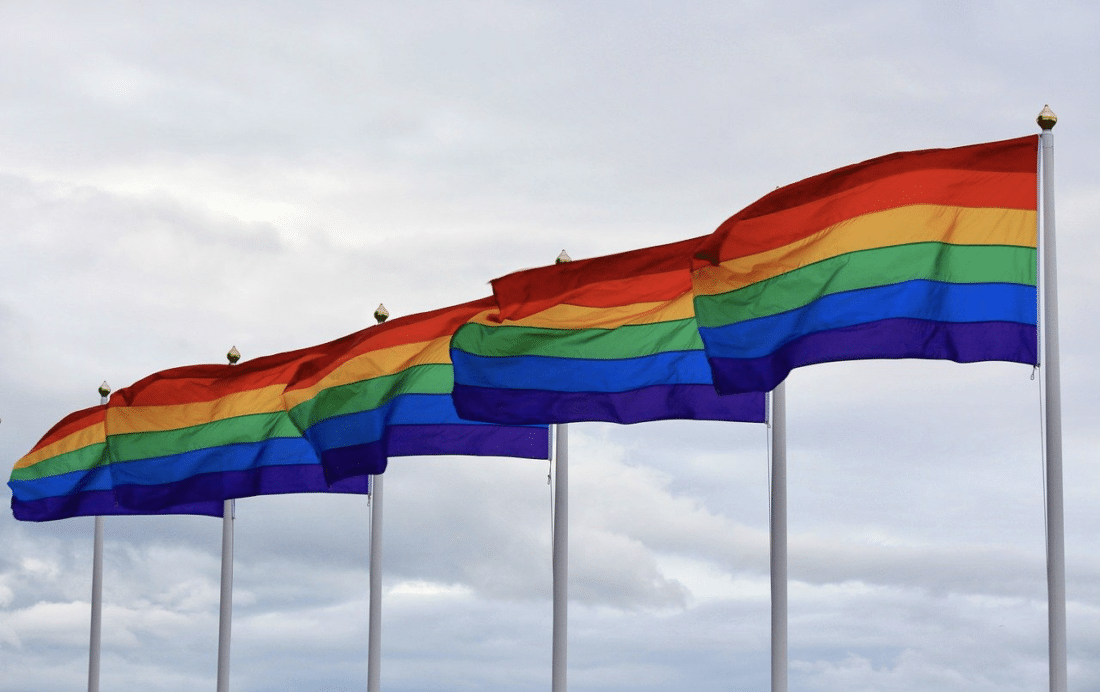Over the past year, we have seen increasing awareness of the importance of Diversity, Equity & Inclusion (DE&I) across communities. This is welcome news for us all. We live in the most diverse and multicultural society the world has ever seen. But there remains more work to be done.
Inclusive marketing is the practice of creating campaigns that reflect and represent the wide diversity of modern society while decreasing cultural bias. Regardless of a person’s race, gender, age, disability, or any other self-identifying attribute, it is a brand’s responsibility to ensure customers feel seen, heard and respected.

Self Identity and LGBTQIA+ Rights
At a time when Americans are increasingly supportive of equal rights for gay, lesbian and transgender people, a growing percentage of Americans identify themselves as LGBTQIA+, especially among younger generations. The largest generation in history, Gen Z (young adults aged 18 to 23), accounts for 15.9% of LGBTQIA+ American adults.
As the population continues to increasingly identify as LGBTQIA+, their buying power will continue to increase. Currently, the total buying power of the adult U.S. LGBTQIA+ population is almost one trillion dollars. Additionally, the LGBTQIA+ community has the highest discretionary household income out of any other subgroup; about 23% above the national average. Yet according to Forbes, LGBTQIA+ ad-spend is lower. Why is that?
Either companies think it is too risky to market to this demographic or they just don’t want to get it wrong.
Authenticity is key: 91% of consumers would rather buy from an authentic brand that they view as trustworthy, citing that as the brand attribute that matters the most. So as companies embark upon their inclusivity marketing to the LGBTQIA+ community, there are a few things to keep in mind to be authentic and inclusive.
LGBTQIA+ Marketing 411
Understanding LGBTQIA+ terms to terms and knowing how to use them correctly is important to help the LGBTQIA+ community feel seen and safe. It is critical for companies to align their values with the community, both internally and externally. As an ally, companies must advocate for the LGBTQIA+ community as well as challenge discrimination in every form.
There are many educational resources, like the Trevor Project’s A Guide to Being an Ally and LinkedIn Learning, that can educate you on the issues important to LGBTQIA+ people. Additionally, Refinery29, It Gets Better Project and GLAAD Media Reference Guide offer glossaries in order to understand and use LGBTQIA+ terms correctly. Check out this video that articulates five tips for being a good ally.
- Understand your privilege (some things in life you will not experience or think about because of who you are).
- Listen and do your homework (zip up and listen) to catch up on issues important to the communities you are supporting.
- Speak up, but not over.
- Realize you are going to make mistakes and apologize. It’s not about your intent; it’s about your impact.
- Remember that ally is a verb, not a noun; saying it isn’t enough. You must take action.
Best LGBTQIA+ Marketing Practices
When it comes to marketing to the LGBTQIA+ community, inclusivity and authenticity are key. A campaign that is seen as exclusionary will definitely land your company in the hot seat. Superficial gestures of solidarity are not the same as tangible actions to lift up the LGBTQIA+ community.

Here is a list of best practices as provided by the Human Rights Campaign.
Be Inclusive and Diverse
- Include LGBTQIA+ individuals, family members, friends and couples that reflect various ages, races and genders in your campaign. Language references to family or relationships should not only include heterosexuals.
- Be sensitive to lesbian, gay, bisexual and transgender stereotypes and avoid positioning LGBTQIA+ people as a perceived threat for humor.
- Advertising often stereotypes; beware of over-simplifying. An unbalanced depiction of extremely effeminate gay men or extremely masculine women, for example, are outdated concepts that only serve to alienate the communities you’re trying to reach.
Do Your Market Research
- When conducting market research or creating new mainstream campaigns, LGBTQIA+ perspectives should be considered and included. Don’t limit yourself to male-targeted research and messages.
Go National
- Consumers outside of major coastal cities are often improperly considered lacking the sophistication to handle LGBTQIA+ themes.
Be Consistent and Confident
- Modifying or withdrawing ads after negative criticism from conservative groups suggests waffling and alienates LGBTQIA+ consumers. Respond to any criticism with business rationales, such as diversity and the bottom line.
- Avoid time-restricted airings of commercials unless they legitimately deal with sexual situations that are inappropriate for youth.
Inclusive Marketing Pitfalls
The world is diverse and interconnected. Companies have an obligation to recognize their global social impact and be inclusive. According to research from Salesforce, 90% of consumers believe that businesses have a responsibility to “look beyond profit and improve the state of the world.” Marketing is no longer centered on intent but on impact. Most of the time companies have positive intent, but it’s the impact of their actions and content that can impact accountability.
The LGBTQIA+ community can sense inauthenticity from a mile away. Rolling out rainbows in June to capitalize on Pride Month is referred to as “rainbow washing” or “rainbow capitalism.” Creating performative marketing campaigns with the aim of selling Pride-themed merchandise or making statements of support without actually doing anything outside of the rebranding can have unintended negative consequences.
“Companies that rainbow wash are seen as pandering and token-istic to this community,” says Andrew Isen, founder and president of the LGBTQ+ marketing and communications agency WinMark Concepts.

There are a number of websites and organizations dedicated to revealing companies who participate in these types of practices as well as those who support anti-LGBTQIA+ laws and workplace inclusion, like The Human Rights Campaign Foundation’s Corporate Equality Index and Progressive Shopper. Given that 81% of consumers use online research in advance of purchases, companies need to be aware LGBTQIA+ consumers know better and understand what is authentic.
Don’t Be a Cliché
Additionally, when marketing to the LGBTQIA+ community, it is important to avoid using stereotypes and clichés that only reinforce negative images of LGBTQIA+ individuals. Here are some ways to depict LGBTQIA+ people while avoiding stereotypes from the Commercial Closet Association:
- Use real LGBTQIA+ individuals, including celebrities and athletes.
- Depict same-sex pairings and/or transgender people in everyday situations, such as at home, driving, shopping or eating.
- Show LGBTQIA+ pairings with physical affection.
- Insert verbal, text, or graphic references to sexuality.
- Create unexpected twists to counter time-worn clichés.
What it boils down to is authenticity. When marketing is inclusive, it is authentic. Create marketing campaigns that speak to a variety of consumers and be sure to include voices from everybody. Do research and include LGBTQIA+ employees/consultants in the creation of marketing campaigns and company dialogue about how to be the best ally to the community. A caring, inclusive, and diverse perspective is what makes any marketing campaign great.
Feature image by Sharon McCutcheon from Pixabay





Join the conversation